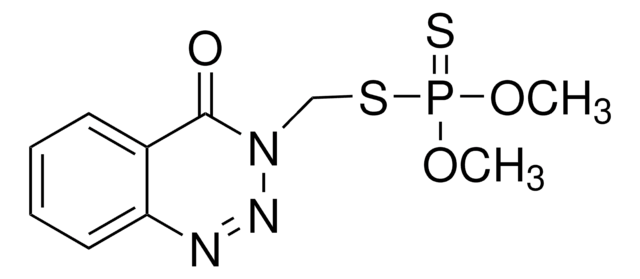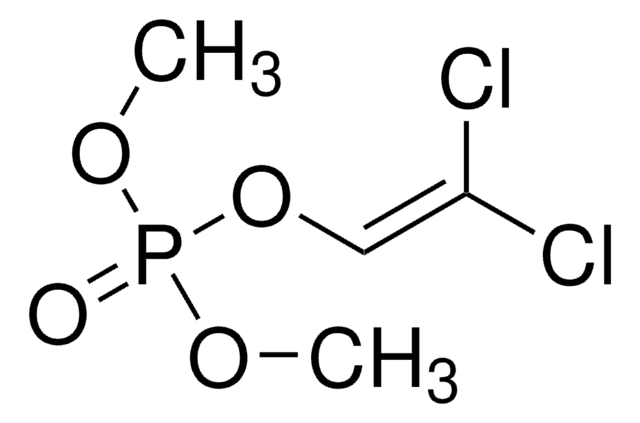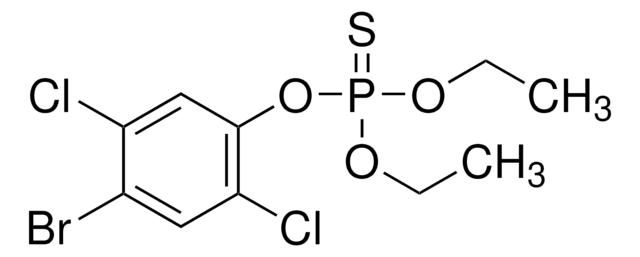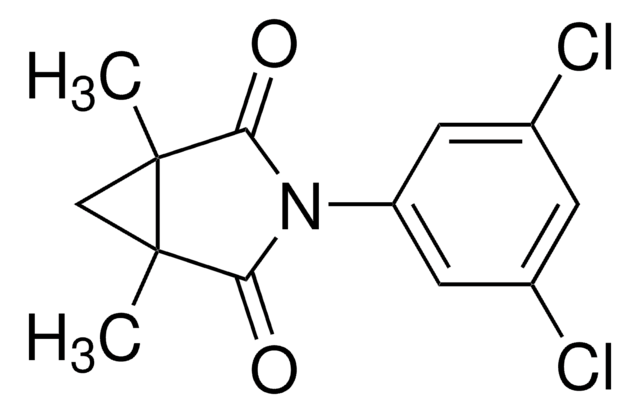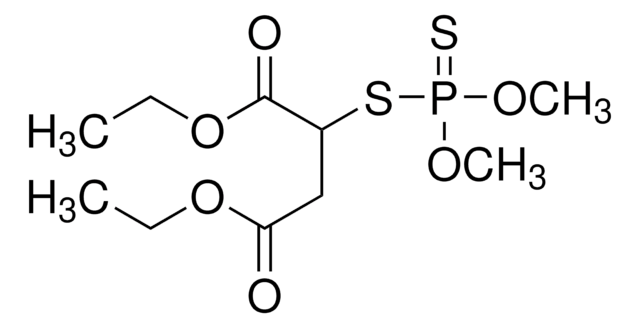45332
Azinphos-ethyl
PESTANAL®, analytical standard
About This Item
Productos recomendados
grade
analytical standard
Quality Level
product line
PESTANAL®
shelf life
limited shelf life, expiry date on the label
technique(s)
HPLC: suitable
gas chromatography (GC): suitable
application(s)
agriculture
environmental
format
neat
storage temp.
2-8°C
SMILES string
CCOP(=S)(OCC)SCN1N=Nc2ccccc2C1=O
InChI
1S/C12H16N3O3PS2/c1-3-17-19(20,18-4-2)21-9-15-12(16)10-7-5-6-8-11(10)13-14-15/h5-8H,3-4,9H2,1-2H3
InChI key
RQVGAIADHNPSME-UHFFFAOYSA-N
¿Está buscando productos similares? Visita Guía de comparación de productos
General description
Application
- Water samples by solid phase extraction (SPE) and ultra-high performance liquid chromatography-quadrupole time-of-flight mass spectrometry (UHPLC-QqTOF-MS).
- Cereals by QuEChERS (quick, easy, cheap, effective, rugged, and safe) extraction and gas chromatography-triple quadrupole mass spectrometry (GC-QqQ MS/MS).
- Fruits and vegetables and neutraceuticals derived from grape seed extracts by QuEChERS extraction and UHPLC-QqQ MS/MS with electrospray ionization (ESI) source and multiple reaction monitoring (MRM) mode of detection.
- Seawater samples by SPE and LC-ESI-MS/MS.
Legal Information
signalword
Danger
hcodes
Hazard Classifications
Acute Tox. 2 Oral - Acute Tox. 3 Dermal - Aquatic Acute 1 - Aquatic Chronic 1
Storage Class
6.1A - Combustible, acute toxic Cat. 1 and 2 / very toxic hazardous materials
wgk_germany
WGK 3
flash_point_f
Not applicable
flash_point_c
Not applicable
ppe
dust mask type N95 (US), Eyeshields, Faceshields, Gloves, type P2 (EN 143) respirator cartridges
Elija entre una de las versiones más recientes:
¿Ya tiene este producto?
Encuentre la documentación para los productos que ha comprado recientemente en la Biblioteca de documentos.
Los clientes también vieron
Protocolos
analytical standard; Tokuthion, technical grade, pkg of 50 mg; Crotoxyphos; Phorate; Azinphos-ethyl; Diazinon; Azinphos-methyl; Demeton-O; Dimethoate; Chlorpyrifos-methyl
Test your food for fipronil contamination using our analytical standards, certified reference materials, solvents, and columns for analysis.
Nuestro equipo de científicos tiene experiencia en todas las áreas de investigación: Ciencias de la vida, Ciencia de los materiales, Síntesis química, Cromatografía, Analítica y muchas otras.
Póngase en contacto con el Servicio técnico